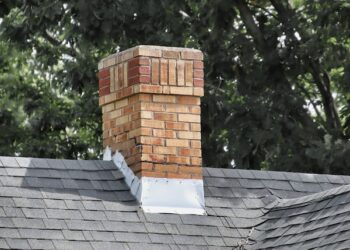Understanding Roof Flashing: Your First Defense Against Leaks
When it comes to protecting your home from leaks, roof flashing is one of the most essential and often overlooked components of your roofing system. While shingles or metal panels get most of the attention, roof flashing is what prevents water from sneaking into vulnerable joints and seams. Without properly installed and well-maintained flashing, even a brand-new roof can quickly develop leaks.
At Precision Roofing & Gutters, we install, repair, and replace roof flashing as part of our comprehensive roofing services throughout Portland, Vancouver, and the surrounding Pacific Northwest. Whether you’re a homeowner trying to understand your roof better or suspect your flashing may need attention, this guide will help you identify what roof flashing does and why it matters.
What Is Roof Flashing?
Roof flashing is a thin layer of metal, typically aluminum, galvanized steel, or copper, installed at critical points of your roof to direct water away from seams, joints, and penetrations. Wherever different surfaces meet or where the roofing material is interrupted, flashing is used to seal and protect the area from moisture intrusion.
Because water naturally follows the path of least resistance, any small gap can quickly lead to interior leaks, wood rot, or mold growth. Flashing acts as the roof’s first line of defense in those high-risk spots.
Where Is Roof Flashing Installed?

Flashing is strategically placed wherever the roof changes direction or connects to another structure. The most common types include:
- Chimney Flashing – Installed around the base of chimneys to prevent water from pooling and seeping into the masonry or attic.
- Valley Flashing – Located where two roof planes meet, guiding rainwater toward the gutters.
- Step Flashing – Used along walls and roof edges where roofing meets siding or vertical structures.
- Vent & Pipe Flashing – Seals gaps around plumbing vents, skylights, and roof penetrations.
- Drip Edge Flashing – Installed at the roof’s edge to prevent water from running behind the fascia or into the soffits.
If any of these areas are missing flashing or if it’s damaged, you can almost guarantee water will find its way inside eventually.
Why Roof Flashing Is Critical for Leak Prevention
Even the best roofs depend on flashing to stay watertight. Here’s why neglecting flashing can lead to major issues:
- Prevents costlier water damage — A few inches of compromised flashing can lead to thousands of dollars in repairs.
- Protects your attic and wall structures — Hidden leaks often start small and spread before you even notice them.
- Improves roof longevity — Properly installed flashing extends the lifespan of your entire roofing system.
- Ensures proper drainage — Flashing channels water exactly where it’s supposed to go, into your gutters and away from the home.
Skipping or improperly installing flashing is one of the most common causes of early roof failure.
Roof Flashing Maintenance & Repair
Like any other roofing material, flashing can wear out over time. Portland and Vancouver homeowners, in particular, deal with heavy rain cycles that can accelerate deterioration.
You should schedule a professional roof inspection every 1–2 years to check for:
- Rust or corrosion
- Loose or missing flashing
- Cracked caulking or sealant
- Visible gaps around roof joints or penetrations
In most cases, flashing can be repaired or resealed, but if it’s badly corroded or incorrectly installed, replacement may be necessary. We provide full flashing repair and replacement services to keep your home watertight year-round.
Contact Us for Roof Flashing Inspection or Repair
If you’ve noticed ceiling stains, dripping sounds during rainfall, or visible damage around your chimney or vents, your roof flashing may already be compromised. Precision Roofing & Gutters is your trusted local roofing contractor, offering professional roof flashing installation, repair, and replacement, as well as full roof inspections and maintenance.
Don’t wait until a small leak turns into major damage, call us today at 503) 926-6194 or request a free roof evaluation online, and let our experts protect your home the right way.
